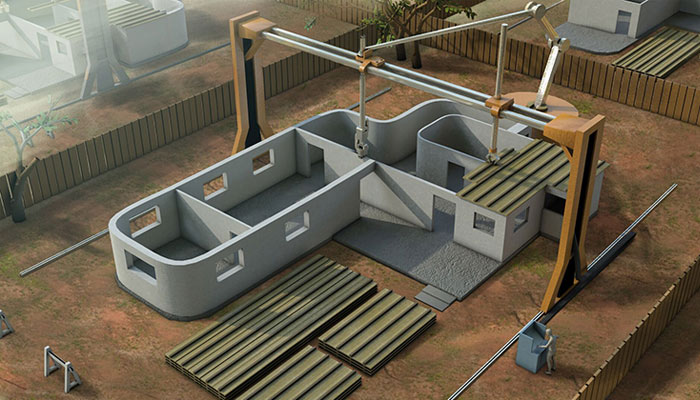As we move through the advancing sphere of innovation, one discovery stands significantly in the industry of infrastructure: 3D printing. This groundbreaking technology is transforming the way buildings and frameworks are conceived and constructed, introducing a new age of productivity, environmental responsibility, and creativity.
Transforming Building: One Sheet at a Moment
The integration of 3D fabrication in infrastructure offers numerous game-changing gains. Primary among these is the substantial reduction in resource waste. Traditional infrastructure techniques commonly lead in considerable surplus resources that add to ecological waste. In opposition, 3D printing employs a accurate stratum-by-stratum approach, using only the needed quantity of material and thus minimizing excess greatly.
Another significant advantage is the immense decline in building period. Projects that conventionally require months can be completed in a fraction of the time with 3D printing innovations. This acceleration is due to the mechanized mechanism of 3D printers that can operate around the clock without human involvement, significantly reducing overall development schedules.
Moreover, 3D manufacturing unlocks prospects for building sophisticated, tailored models at no additional expense. The adaptability of 3D devices allows for intricate patterns and shapes to be produced that would either be exceptionally expensive or impossible to achieve with traditional infrastructure techniques. This function not only improves design beauty but also allows engineers to optimize designs for better efficiency and resilience.

Cutting Expenses and Enhancing Accessibility
Expense cutting is yet another notable perk delivered by 3D manufacturing in construction. By reducing labor costs and decreasing the timeframe needed to finish projects, the overall budget tied to constructing frameworks is lowered. Additionally, low-cost 3D fabrication units are getting more attainable, placing this innovation attainable for smaller companies and independent creators eager to explore its capabilities.
The cost-effectiveness of these units also paves the way for creativity in related areas such as fabric manufacturing. While mainly acknowledged in infrastructure circles, the reach of 3D printing expands into multiple domains including apparel. Here, designers innovate with 3D fabricated garments, expanding creative limits and redefining textile handling while benefiting from minimal production expenses.
An Eco-Friendly Future Fueled by Progress
Sustainability is another foundation of this innovation’s value in the building sector. 3D fabrication encourages a sustainable approach to building by minimizing material excess and resource expenditure. Additionally, it supports the integration of green substances like recycled polymers or hybrid materials, which moreover reduces the environmental effect of this traditionally high-emission industry.
The international shift in favor of eco-conscious methods discovers a strong partner in 3D manufacturing innovations, possibly transforming how structural regulations and criteria are established going forward. By implementing these advanced techniques, the infrastructure industry moves towards realizing greener operational models.
Turning Dreams to Life
Picture public facilities in disadvantaged neighborhoods being erected within a short time to serve pressing needs or designers creating wonders inspired by organic structures that blend effortlessly into their environments – such scenarios are not only hypothetical but are quickly becoming possible through 3D manufacturing.
While these breakthroughs mark just the onset, they indicate a era where development integrates harmoniously with both societal aspirations and sustainable care.
If we proceed on this path, infrastructure will not only mean the structural formation of spaces but also symbolize a commitment to innovative thinking and ethical existence. Merging creativity with functionality, 3D manufacturing is ready to redefine our physical reality in forms we are just starting to comprehend.
Through ongoing advancements and an acceptance of these cutting-edge strategies, our developed environments will undoubtedly transform into reflections of human ingenuity powered by the exactness and endless possibilities of 3D fabrication.
To read more about may in 3dhave a look at this popular resource
